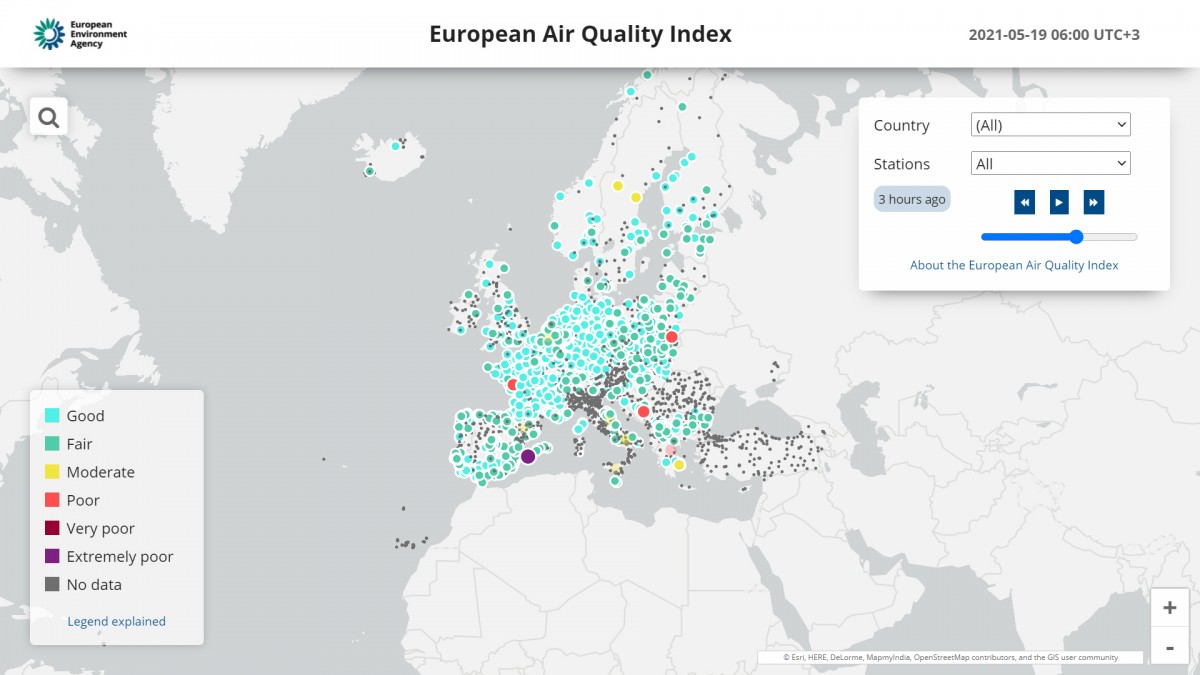
The European Air Quality Index, a new online service by the European Environment Agency (EEA) and the European Commission, provides air quality information from more than 4000 air quality monitoring stations across Europe, allowing users to check the state of air quality in European cities and regions. Compared to other European countries, Estonia's air quality is good.
The index consists of an interactive map showing local air quality at the stations by the five main pollutants affecting human health and the environment: fine particles (PM2.5), coarse particles (PM10), tropospheric ozone (O3), nitrogen dioxide (NO2) and sulphur dioxide (SO2).
The EEA has also published up-to-date country fact sheets with a summary of air pollution and its impact in the 33 EEA Member states in 2019. The fact sheets provide more detailed information on air pollutant emissions and air quality in different countries, complementing the EEA report 'Air Quality in Europe – 2019 Report'.
The EEA's latest annual air quality report suggests that most city residents in Europe are still exposed to levels of air pollution that the World Health Organization (WHO) considers hazardous. The most harmful pollutant, fine particles (PM2.5), caused an estimated 412,000 premature deaths in Europe in 2016. According to the report, air pollution also has a significant impact on economy, increasing medical costs, reducing the productivity of workers and damaging soil, crops, forests, lakes and rivers. The biggest sources of air pollutants in Europe are road transport, agriculture, power plants, industry and households.
Based on the air quality monitoring results, the quality of ambient air in Estonia continues to be good in terms of the aforementioned pollutants. For urban air, the main problem could be fine particles, whose negative impact on human health has been getting increasing attention worldwide in recent years. The sources of fine particles are heating, including stove heating and central heating boiler houses, road transport and various industrial companies. Based on the 2019 data of the Estonian national environmental monitoring programme, the average amount of fine particles as well as the daily average maximums in most Estonian urban air monitoring stations decreased compared to the previous year, although the number of cases exceeding the limit value slightly increased compared to 2018.
Ambient air quality monitoring is one part of the national environmental monitoring programme. It is commissioned by the Environment Agency and carried out by the Estonian Environmental Research Centre. There are a total of nine national ambient air monitoring stations in Estonia (six urban stations and three background stations).In addition to national monitoring, several companies monitor ambient air quality, whose data can be viewed in the application.